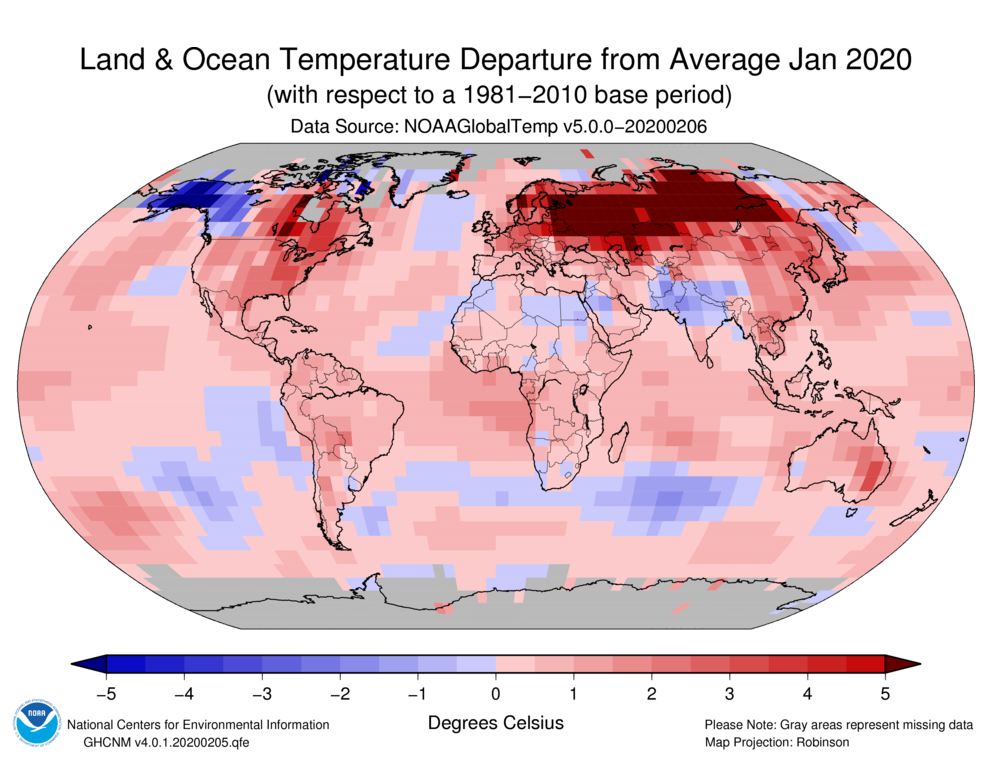We’re off to a hot start in 2020, with January setting a new mark as the warmest instance of that month on record for the globe. And as NOAA pointed out in its monthly summary released Thursday, that occurred without the warming influence of an El Niño in the equatorial Pacific Ocean, where conditions remain neutral.
Few places around the world had a cool month, with much of India and Alaska/Western Canada providing exceptions. Europe through to northern Asia was particularly warm, and January ranked fifth warmest over the contiguous US. This was largely due to remarkably tight circulation of the “polar vortex,” which helped keep Arctic air bottled up north of the mid-latitudes.
For the US, the weather pattern was dominated by an area of low pressure around Alaska and high pressure off the coast of California. Alaska and western Canada stayed colder in this pattern, which also funneled moisture over the Pacific Northwest while keeping the US Southwest dry. In the middle of the month, the low pressure shifted east for a bit, bringing just enough cool air over the central US to produce a fair bit of precipitation.
As a result, drought conditions eased a bit in the Pacific Northwest but continued in the Four Corners region. California was also pushed into drought status, and drought intensified even further in parts of southern Texas.
NOAA put a spotlight on the Great Lakes this month, which are seeing record high water levels. After the wettest year on record last year, January was warm and wet enough to keep water levels high—about 15-30cm (0.5 to 1 ft.) above average. Combined with very low lake ice coverage, this has led to hundreds of millions of dollars of damage along shorelines as storms produced impressive waves. On January 10 and 11, for example, waves as high as 22 feet walloped the shores of Lake Michigan between Chicago and Milwaukee.


